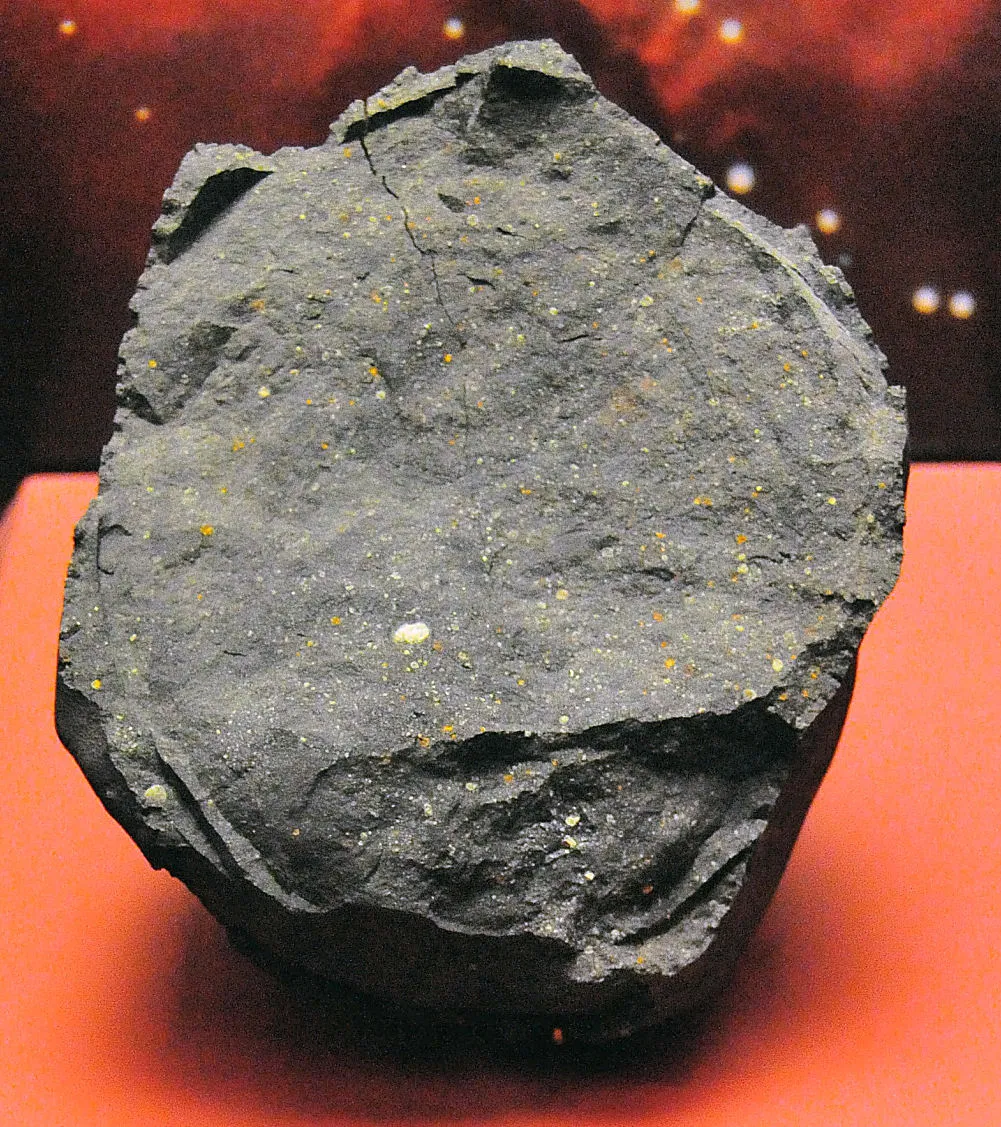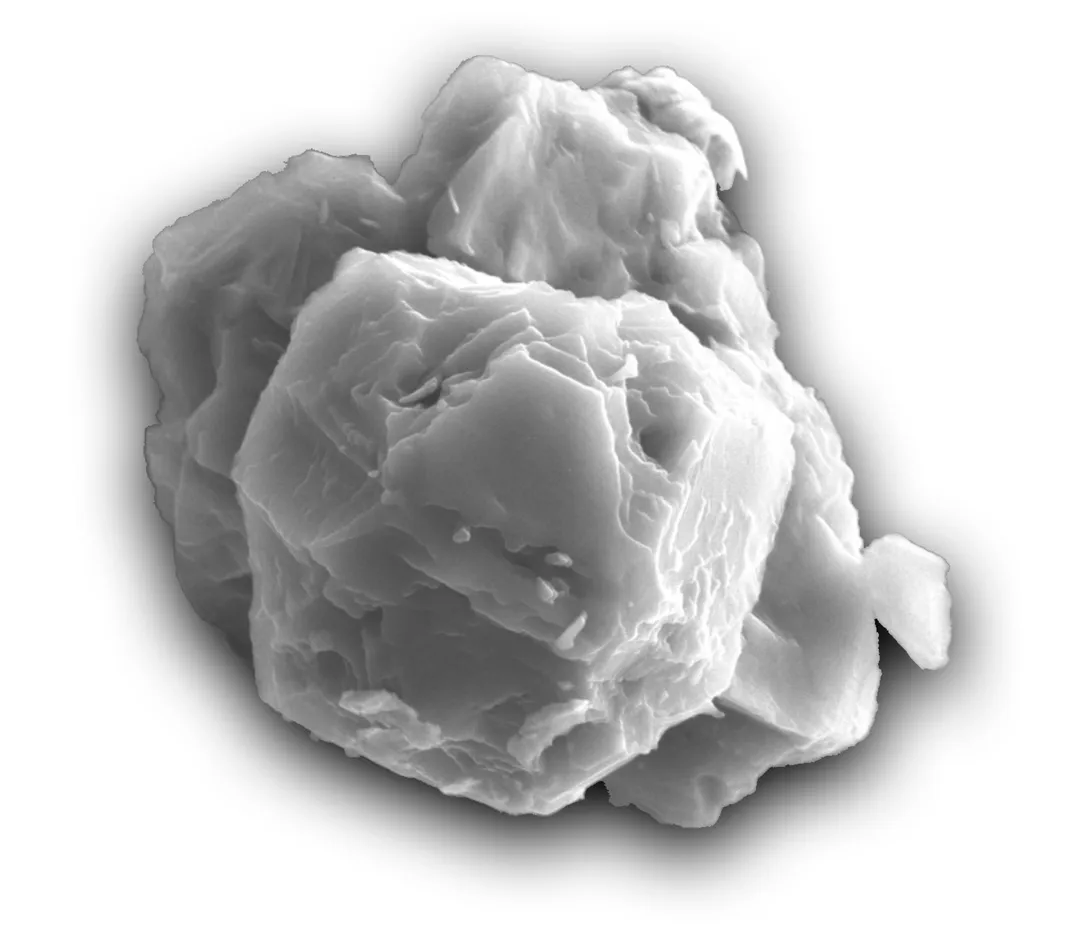Meteorite Grains Are the Oldest Known Solid Material on Earth
The oldest dust sample, perhaps 7 billion years old, predates the formation of our planet and the sun
/https://tf-cmsv2-smithsonianmag-media.s3.amazonaws.com/filer/12/d2/12d25d01-7f56-4ec6-8875-6097d2c1cd8f/221025.jpg)
A little more than 50 years ago, on September 28, 1969, a meteorite crashed near the rural village of Murchison in Victoria, Australia. Witnesses saw a fireball streak through the sky and break into three pieces just before 11 a.m. local time, followed by an audible tremor in the area. Locals came upon several fragments of the meteorite, the largest of which, with a mass of 680 grams, crashed through a roof and landed in a pile of hay. All together, some 100 kilograms of the Murchison meteorite were recovered and sent to scientific institutions around the world.
“The Murchison meteorite is a wonderful resource for the scientific community,” says Philipp Heck, a curator of meteorites at the Field Museum in Chicago, which houses a large portion of the extraterrestrial object. “It contains some of the oldest condensates in the solar system and also presolar materials.”
Some of those presolar materials—microscopic grains that formed before the sun, measuring about 2 to 30 micrometers across—have been dated at 4.6 to 4.9 billion years old. And one of the grains analyzed in a study published today in the Proceedings of the National Academy of Sciences is estimated to be roughly 7 billion years old, making it the oldest known material on Earth.
“The oldest one is about 3 billion years older than the sun, [which] makes it about 7 [or 7.5] billion years old,” says Heck, the lead author of the study. The sun formed about 4.6 billion years ago, and Earth formed about 4.54 billion years ago.

Fifty presolar grains were analyzed in the new study, and the research team was able to estimate the ages of 40 of them. The majority, about 60 percent, predated the solar system by 300 million years or fewer, according to the study. Only a few grains, about 8 percent, were found to be more than a billion years older than the solar system, making them the oldest material ever dated. These grains were originally separated from Murchison meteorite fragments at the University of Chicago over 30 years ago, but they were preserved so future scientists could study them with modern dating technologies.
“We use a different variety of chemical reagents, including acids, to dissolve away silicates and everything that formed in the solar system to get that acid-resistant fraction of presolar dust,” Heck says. He describes the method as “burning down the haystack to find the needle,” and while some presolar material is lost in the process, the technique has yielded tens of thousands of presolar grains, but only about 100 “large ones.”
“Large” is a relative term in this case, considering that the entire mass of material analyzed in the new study is just 300 nanograms, or 300 billionths of a gram. To date the tiny amount of material, the researchers looked for the abundance of certain atoms formed by cosmic rays hitting the dust grains.
To date the material, the researchers used a unique technique to measure the effects of cosmic rays hitting the grains. “When these grains flow through space, they’re exposed to cosmic rays, [and] the galactic cosmic rays that they are exposed to are predominantly high-energy protons,” Heck says. “Most of them, they just fly through the solid grain. But rarely there is an interaction, [and] one of those protons can hit an atom in the grain.”
The team measured the remnants from cosmic ray protons hitting silicon carbide molecules and breaking the silicon atoms into different components. “The silicon can be split into helium and neon,” Heck says. “We can take that grain and place it in a mass spectrometer, and we heat the grain with a laser, release the gas and simply count the neon atoms and the helium atoms. By the type of isotope of helium and the type of isotope of neon we can then determine if they were produced by cosmic rays or not. And when we know how many cosmic ray-produced helium and neon atoms we have, we can calculate an age, because the production rate is pretty constant over time.”

This dating technique, counting the remnant atoms from collisions with cosmic rays, has been tested in particle accelerators to confirm that it can provide an accurate age estimation. Heck compares it to “putting out a bucket in a rainstorm, then measuring how much water accumulated, and then we can tell how long it was outside. It only works if the rainfall is constant over time, and that’s luckily the case with cosmic rays.”
However, other dating techniques, such as comparing the isotope ratios left behind by decaying radioactive materials, cannot yet be used to provide an absolute date for these ancient dust grains. And the older the material, or the smaller the grain, the higher the uncertainty in the dating estimate.
“There is a large uncertainty because there is a lot of modeling involved in determining those ages,” says Pierre Haenecour, an assistant professor with the University of Arizona’s Lunar and Planetary Laboratory who studies meteorites and interstellar dust grains but was not involved in the new study. The rate that cosmic rays hit the material, for example, and the number of times that those interactions split the silicon atoms need to be estimated. “It’s not a straightforward way of measuring isotopic abundance and getting an age directly from that measurement. So it’s a difficult estimate. But still, knowing that [some] of those grains are at least 300 million years older than anything in the solar system is … confirming that they are indeed the oldest solids in the solar system.”
As for the oldest grain, Haenecour says, “I think it is difficult to really actually know that this grain is 7 billion years old,” but adds that it does appear to be much older than the other grains in the study.
Heck and colleagues also hypothesize that the majority of the grains in the study could have formed during a period of active star formation about 7 billion years ago, which would have produced large amounts of dust roughly 4.6 to 4.9 billion years ago—the same age as most of the grains. Those dust grains, formed somewhere in the Milky Way, clumped together and eventually made their way into the disk of gas and dust around the newborn sun, where they mixed with material that aggregated into an asteroid. Billions of years later, a chunk of that asteroid crashed into Australia. Only about five percent of meteorites contain presolar grains, and in those unique space rocks, the presolar material only accounts for a few parts per million of all the grains in the meteorite.
In the future, Heck and others will isolate more presolar grains from meteorites such as Murchison and continue to date them using the cosmic ray technique. With more grains, researchers can refine their age estimates to further test the accuracy of the method. And researchers also could improve spectroscopy techniques to possibly measure uranium and lead isotope ratios to get an absolute age, similar to how terrestrial rocks are dated, Haenecour says.
“With this study we are just starting this journey of exploring the history of the galaxy with meteorites,” Heck says. “The amazing thing is we have a rock in our collection that we just take out of the cabinet and learn something about the history of our galaxy.”
/https://tf-cmsv2-smithsonianmag-media.s3.amazonaws.com/accounts/headshot/bennett.jpg)
/https://tf-cmsv2-smithsonianmag-media.s3.amazonaws.com/accounts/headshot/bennett.jpg)